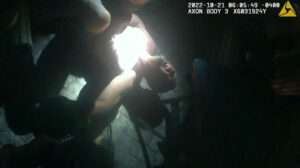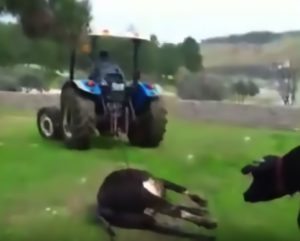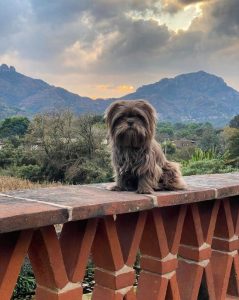This is the moment a surprised resident films over 20 coatis sniffing around his property.
Fifty-five-year-old artisan Ricardo Cesar Lynch filmed the diminutive mammals in the garden of the Riviera de Sao Lourenco condominium where he lives in the Brazilian municipality of Bertioga last month.
Lynch told Newsflash: “We have a lot of animals in the Riviera. In addition to the coatis, we have armadillos, we have toucans, we have monkeys, all free in the wild.
“When the Riviera was built, they took away the animals and put them in a closed area of the forest with sufficient food. As time passed, the Riviera grew and the animal population also grew.
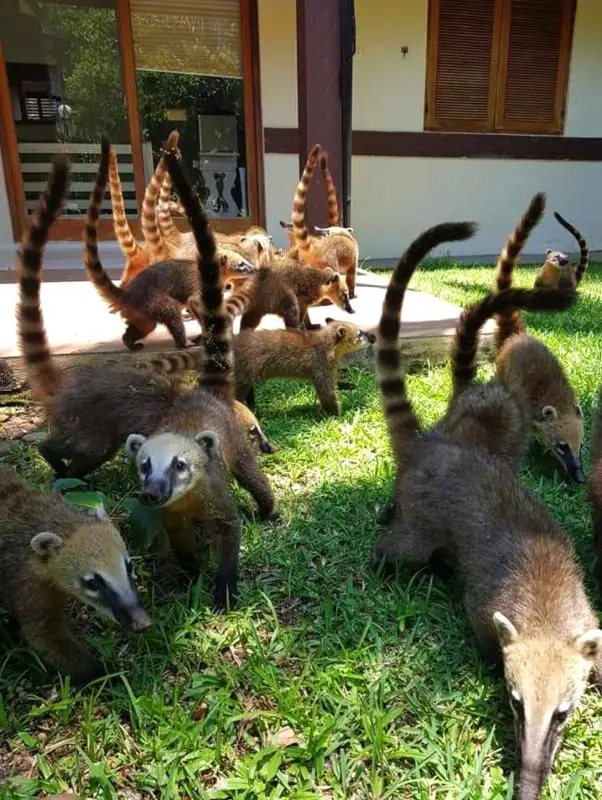
“There are 30 to 50 coatis and they move in groups, like monkeys, only coatis are more docile. They come up to us for food. They’re cute and beautiful but we can’t touch them because of zoonotic diseases.
“You must not feed wild animals because they get used to it and they lose the ability to hunt and obtain their own food.”
Lynch told Newsflash that the coatis, also known as coatimundis and the hog-nosed coon, used to come to the condominium during the week to rummage through the bins in search of food.
However, their behaviour has since changed and they have now learned to come at the weekend when families visit the coastal municipality.
Lynch told Newsflash: “There are many children there and many adults who give them fruit or bread. They come and eat it out of their hands.”
Lynch said that he used to leave his door open but now locks it as the coatis have even entered his house.
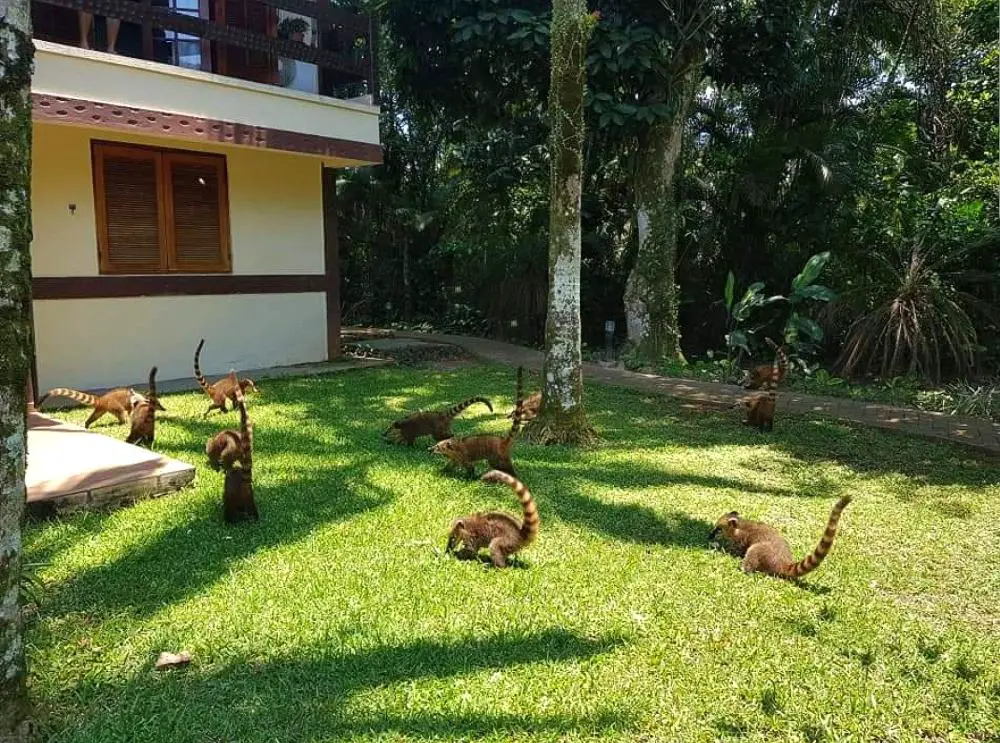
He added: “A few years back, a group entered a house in the Riviera. The people had gone to Sao Paulo and left a window open.
“The coatis went in and turned the whole house upside down. They opened everything. They took all the food.”
Coatis are member of the raccoon family and are native to the Americas. Adults typically measure 33 to 69 centimetres (13 to 27 inches) from the head to the base of the tail.
It was reported in 2010 that around 10 of the mammals were found living wild in Cumbria in north-west England.
Lynch told Newsflash: “They’re very beautiful, but we have to teach the population not to feed and not to attract the animals.”
The ViralTab page is created by and dedicated to professional, independent freelance journalists. It is a place for us to showcase our work. When our news is sold to our media partners, we will include the link here.

